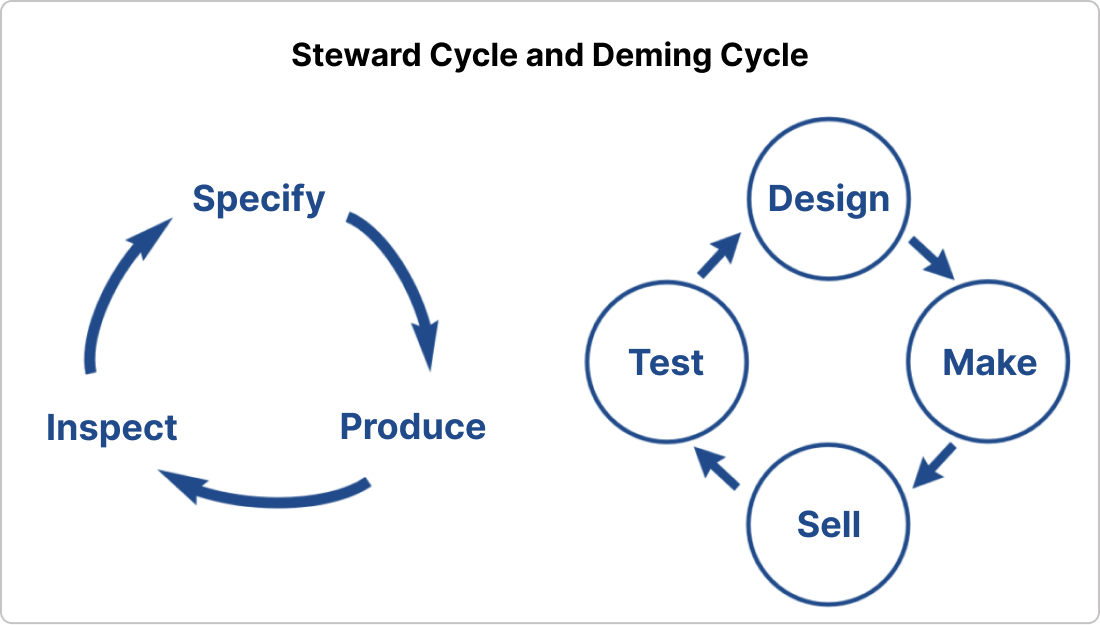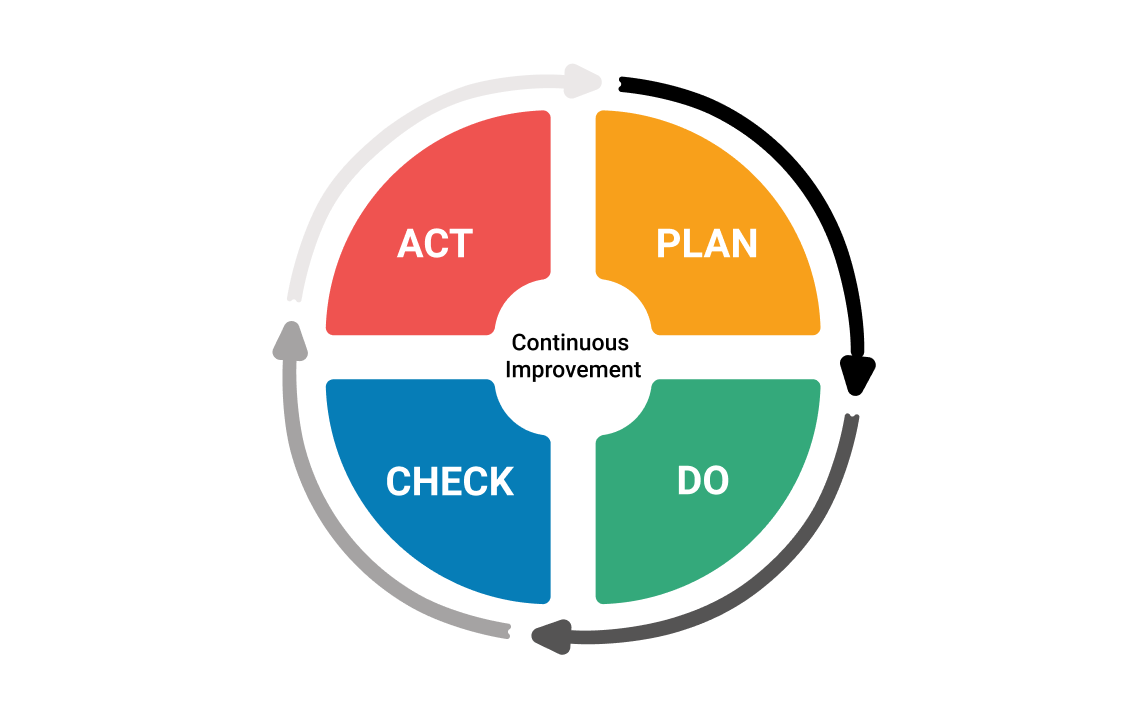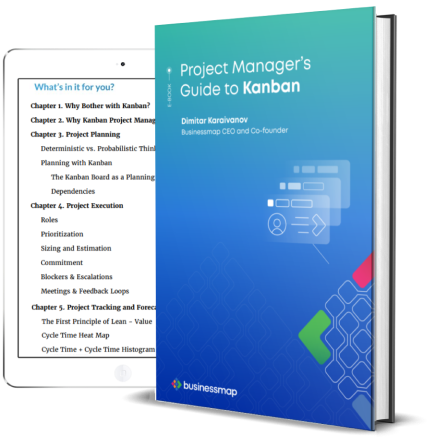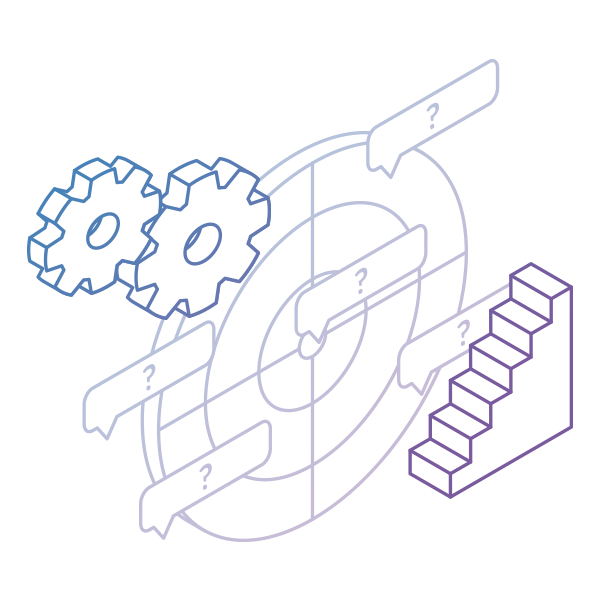Key Takeaways
-
What is the PDCA cycle? It's a 4-step Lean method (Plan-Do-Check-Act) used to improve processes, solve problems, and sustain performance.
-
Where can it be applied? From product development to customer service, PDCA applies across industries and teams.
-
Key tools: Kanban, root cause analysis, value stream mapping, and digital PDCA boards.
-
Success factor: Iteration - repeat the cycle to refine processes and foster a culture of continuous improvement.
What Is the PDCA Cycle and How Does It Work?
The PDCA (Plan–Do–Check–Act) cycle is a structured, repeatable framework for solving problems and improving processes. It's a core pillar of Lean management and continuous improvement.
Originally developed by Walter Shewhart and further developed by W. Edwards Deming, the PDCA method was designed to help teams build solutions iteratively, learn from feedback, and prevent recurring mistakes.
 Image credit: Lean Enterprise Institute
Image credit: Lean Enterprise Institute
The model follows four simple yet powerful stages:
-
Plan: Identify a problem, set goals, and develop a hypothesis or strategy. Set SMART goals, analyze current performance, identify root causes, and align stakeholders. Strong planning lays the foundation for actionable change.
-
Do: Implement the plan on a small scale to minimize risk. Ensure all involved parties understand their roles and follow standardized procedures to ensure a smooth implementation.
-
Check: Analyze results and evaluate what worked or didn't. This is where insights are captured, deviations are examined, and feedback is collected. It's crucial to determine whether the test yielded a successful solution.
-
Act: Standardize successful changes or revise the plan and try again. This stage reinforces learning and enables iterative growth.

Where Can PDCA Be Applied?
The PDCA cycle is incredibly versatile and effective in a wide range of environments:
- Manufacturing: Streamlining production lines and reducing waste.
- Service industries: Improving response times or customer experience.
- Healthcare: Enhancing patient flow or reducing errors.
- Software development: Iterating on features and deployments.
- Education: Refining teaching methods or administrative processes.
Whether launching a new process or refining an existing one, the PDCA approach helps ensure informed, data-driven decisions.
How to Implement PDCA in Your Organization
Imagine you're receiving a growing number of customer complaints about the slow response rate of your support team. To protect customer satisfaction, something must change - quickly. This is where the PDCA model becomes your go-to approach. Instead of guessing, you take a structured approach: define the problem, test solutions, evaluate results, and refine.
Here's how to roll out PDCA effectively in your organization:
-
Start small: Choose one process with a clear problem.
-
Visualize your workflow: Use a PDCA whiteboard (physical or digital) to map the cycle.
-
Involve your team: Gather cross-functional input for broader insight.
-
Use Lean tools: Combine PDCA with Value Stream Mapping, Fishbone Diagrams, or 5 Whys.
-
Measure success: Track lead time, defect rate, or throughput.
-
Repeat and scale: Standardize what works and use lessons learned for the next iteration.
What Are Typical PDCA Challenges?
Skipping the Check phase: Leads to implementing untested changes.
-
Overplanning: Causes delays or paralysis.
-
Lack of ownership: Without team engagement, PDCA efforts fade.
-
No follow-through: Improvement stops if Act doesn't lead to standardization.
Success comes from treating PDCA as a continuous loop, not a one-time project.
What Lean Tools Support the PDCA Process?
To effectively run PDCA cycles, many Lean tools complement the process:
-
Standard Work Templates: Ensure consistency across iterations.
10 Years Kanban Experience In 1 Free Book.
Project Manager's Guide to Kanban
Real-Life Examples of Companies Using PDCA
-
Nestlé: Reduced waste and improved efficiency using PDCA and Kaizen. Bottling plants improved significantly through techniques like Value Stream Mapping. (Source: reverscore.com)
-
Lockheed Martin: Achieved major reductions in manufacturing costs and delivery times by using PDCA across aerospace projects. (Source: 6Sigma.com)
-
Nike: Embedded PDCA into Lean training to improve product quality and workforce empowerment while eliminating non-value-added activities. (Source: OpEx Learning)
How Do You Measure Success in the PDCA Cycle?
Use clear, relevant KPIs to track improvement:
- Defect rate: Are quality issues declining?
- Employee participation: Are teams engaged?
- Goal completion rate: Are PDCA outcomes being adopted?
Analyze these flow metrics over each iteration to understand what's working and why.
What Is a PDCA Board?
A PDCA board is a visual management tool that organizes improvement cycles around the four PDCA stages. It helps teams map issues, track actions, and ensure accountability at each step.
How to Set Up a PDCA Board
- Divide the board into four quadrants: Plan, Do, Check, Act.
- Use sticky notes or digital cards to track tasks.
- Assign owners and timelines to each action item.
- Update regularly in team huddles or retrospectives.
- Utilize AI-powered templates to create an initial version of your PDCA model and refine it over time.
This promotes transparency and reinforces a culture of improvement.
Businessmap is the most flexible software
to align work with company goals





 Image credit:
Image credit: 




